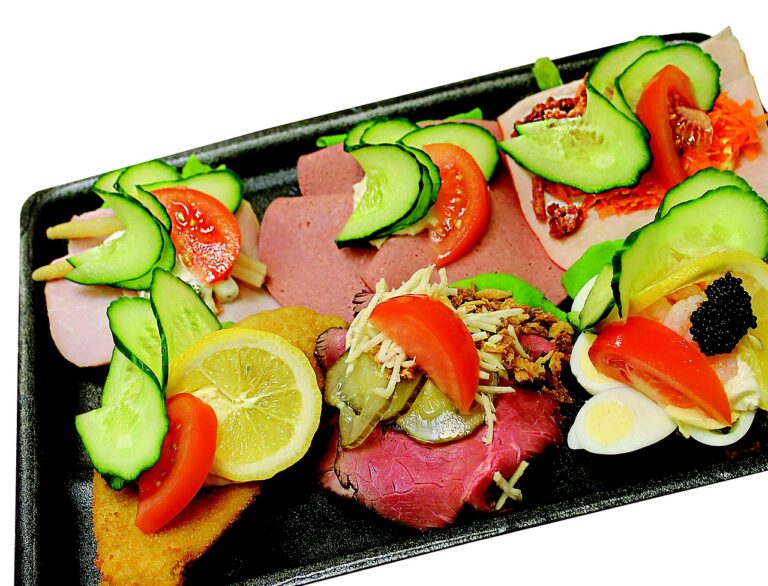The Emergence of Virtual Restaurants in the Digital Age.
In today’s digital age, virtual restaurants are emerging as a new trend in the food industry. These establishments operate solely through online platforms, catering to the growing demand for convenient and quick dining options. With the rise of online food delivery services, virtual restaurants have found a niche market that allows them to reach a wider audience without the need for a physical storefront.
By utilizing the virtual model, these restaurants can experiment with diverse menus and cuisines, adapting quickly to changing consumer preferences. This flexibility also enables them to optimize their operations, focusing on menu items that are popular and profitable while adjusting their offerings in real-time based on customer feedback. As the food industry continues to evolve in response to technological advancements, virtual restaurants are poised to play a significant role in shaping the future of dining experiences.
The Rise of Online Food Delivery Platforms
Online food delivery platforms have transformed the way people order food, providing convenience and a wide variety of options at their fingertips. With just a few taps on a smartphone app or clicks on a website, customers can have their favorite meals delivered right to their doorstep, making dining in easier than ever before. This shift towards digital ordering has revolutionized the food industry, creating new opportunities for both restaurants and consumers to connect in a seamless and efficient manner.
From small local eateries to large chain restaurants, online food delivery platforms have enabled businesses of all sizes to reach a broader customer base and increase their revenue streams. By partnering with these platforms, restaurants can now tap into a larger pool of potential customers who prefer ordering online rather than dining in or cooking at home. This symbiotic relationship between restaurants and online delivery services has contributed to the overall growth and success of the food industry in the digital age.
How Virtual Restaurants Operate
Virtual restaurants operate solely in the digital realm, without a physical dining space for customers. These establishments function mainly through online food delivery platforms, offering a diverse range of cuisines and menu items to cater to the preferences of various customers. Through the use of specialized kitchen spaces or collaborations with existing restaurants, virtual eateries can efficiently prepare and deliver orders to consumers seeking convenient dining options.
Orders placed through online platforms are received by the virtual restaurant, which then processes the request and prepares the food for delivery. Utilizing digital marketing strategies and social media platforms, virtual restaurants can effectively promote their offerings to reach a wider audience of potential customers. By optimizing their operations for delivery-centric services, these establishments can adapt to the growing demand for convenience and flexibility in the modern food industry landscape.
• Virtual restaurants operate solely in the digital realm
• They do not have a physical dining space for customers
• Function mainly through online food delivery platforms
• Offer a diverse range of cuisines and menu items to cater to various preferences
Orders placed through online platforms are received by the virtual restaurant, which then processes the request and prepares the food for delivery. Utilizing digital marketing strategies and social media platforms, virtual restaurants can effectively promote their offerings to reach a wider audience of potential customers. By optimizing their operations for delivery-centric services, these establishments can adapt to the growing demand for convenience and flexibility in the modern food industry landscape.
What is a virtual restaurant?
A virtual restaurant is a food establishment that operates solely through online platforms, without a physical location for customers to dine in.
How do virtual restaurants differ from traditional restaurants?
Virtual restaurants do not have a physical dining space or storefront for customers to visit. Instead, they solely rely on online orders for delivery or pickup.
How do virtual restaurants receive orders?
Virtual restaurants receive orders through online food delivery platforms or their own website and app. Customers place orders electronically, and the restaurant prepares and delivers the food accordingly.
Are virtual restaurants becoming more popular?
Yes, virtual restaurants have been gaining popularity in recent years, especially with the rise of online food delivery platforms. They offer a cost-effective way for entrepreneurs to enter the food industry without the high overhead costs of a traditional restaurant.
Can customers dine in at a virtual restaurant?
No, virtual restaurants do not have a physical location for customers to dine in. Customers can only order food for delivery or pickup.
How do virtual restaurants handle food safety and quality control?
Virtual restaurants follow the same food safety regulations as traditional restaurants. They ensure that food is prepared, stored, and delivered safely to maintain quality and freshness for customers.







